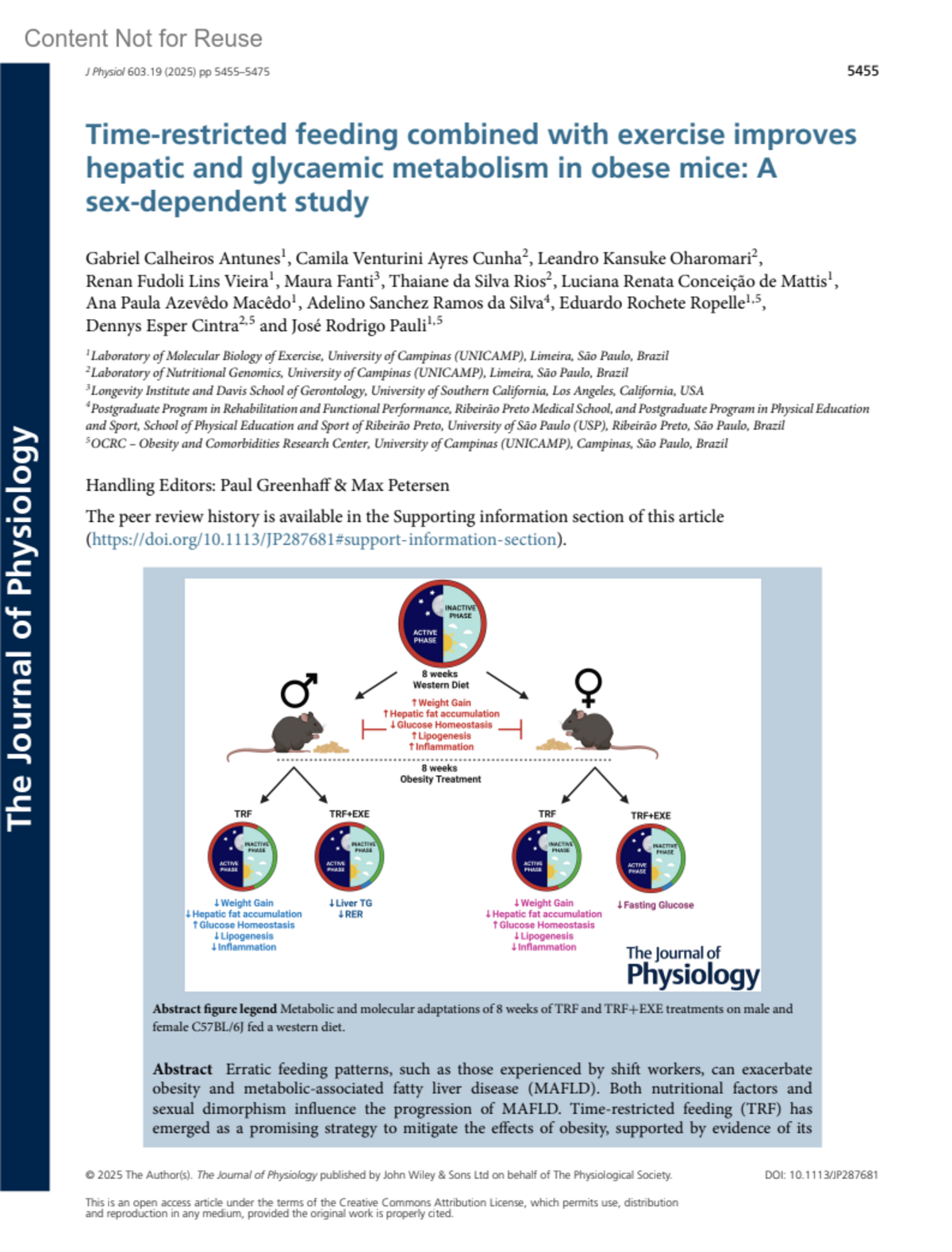1Laboratory of Molecular Biology of Exercise University of Campinas (UNICAMP) Limeira São Paulo Brazil
2Laboratory of Nutritional Genomics University of Campinas (UNICAMP) Limeira São Paulo Brazil
3Longevity Institute and Davis School of Gerontology University of Southern California Los Angeles California USA
4Postgraduate Program in Rehabilitation and Functional Performance, Ribeirão Preto Medical School, and Postgraduate Program in Physical Education and Sport, School of Physical Education and Sport of Ribeirão Preto University of São Paulo (USP) Ribeirão Preto São Paulo Brazil
5OCRC – Obesity and Comorbidities Research Center University of Campinas (UNICAMP) Campinas São Paulo Brazil
Corresponding author José R. Pauli: Laboratory of Molecular Biology of Exercise (LaBMEx), School of Applied Science, University of Campinas, 13484–350 – Limeira, SP, Brazil. Email: [email protected]
Gabriel C. Antunes is a PhD student in Medical Pathophysiology in the Obesity and Comorbidities Research Center (OCRC) at University of Campinas, Brazil. He has a bachelor's degree in nutrition and completed his master's degree in nutrition, sports and metabolism sciences in the Laboratory of Molecular Biology of Exercise (LabMEx) at University of Campinas. With expertise in molecular biology, he investigates the effects of nutritional approaches and physical exercise on molecular mechanisms for the treatment and prevention of metabolic diseases and for the control of hunger and satiety by neurological mechanisms.
Received September 12, 2024
Accepted July 23, 2025
This is an open access article under the terms of the http://creativecommons.org/licenses/by/4.0/ License, which permits use, distribution and reproduction in any medium, provided the original work is properly cited.


